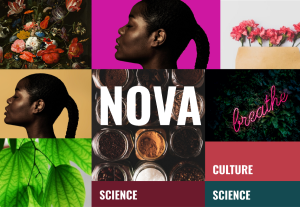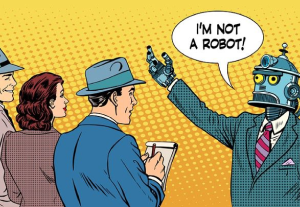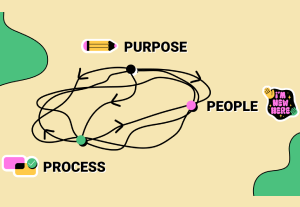- Accessibility, Behavioral Science, Customer Experience, Design, Design Theory, Healthcare, Human factors, Psychology and Human Behavior, Technology, Things UX People Like, Usability, UX Education, UX Magazine
Technology dependency, a shortening of the attention span and the overwhelming feeling of being always on in todays society are some of the matters we need to solve in our relationship with the Internet. We are here to create valuable, relevant experiences and it seems that it is more needed than ever.
- The Internet has helped us advance significantly in various directions but it also shortened our attention span and gave us the overwhelming feeling of being always on.
- The author brings up the problem of the Internet impact on people’s lives and believes bad design to be the reason.
- The author considers Netflix losing subscribers and Disney+’s Obi-Wan Kenobi not getting the expected iMDB score good examples of bad UX design.
- The problem of being overwhelmed, dependent on technology and even bigger problems like the depression it can cause can be solved by focussing on good user experience design.
Share this link
- August 16, 2022

- Behavioral Science, Customer Experience, Design, Design Theory, Usability, UX Education, UX Magazine
Tips on implementing co-design approaches into your design practice based on Stanford d.school experience.
- The author talks about how the Stanford d.school’s Designing for Social Systems Program decided to take a different approach to workshopping — a co-design approach.
- The author shares advice for adopting this approach:
- Establish practices to include co-designers with lived experience
- Use a virtual format as it allows for remote collaboration and broader reach
- Lay the groundwork well in advance
- Be flexible with your process, tools, and timing
- Work with partners with deep ties in communities to engage potential co-designers with lived experience
- Provide an honorarium for co-designers’ time and expertise
- Ensure other design team members are aware of power dynamics and biases
- Put the challenge into historical context
- The article also covers reflections from other сo-designing сommunity members on their experience and how social sector leaders reflect on collaborating with co-designers.
Share this link
- August 11, 2022

- Customer Experience, Design, Product design, Research Methods and Techniques, Research Tools and Software, Usability, UX Education, UX Magazine
Process notes of creating an online magazine for a female professional.
- The article covers the creation of an online magazine,“NOVA” — a publication focused on spicing up the life of female professionals.
- The author shares process notes and perspective from each of the project phases:
- Research (qualitative research, competitor analysis, interviews, quantitate research)
- Card Sorting
- LOW-FI (wire framing)
- MID-FI (edits)
- Branding (colors, font, voice&tone, mood board)
- Hi-Fi
- Lessons and learnings from the project:
- Mind spacing, especially margins
- Balance between creativity and function in every design
- Know when enough is enough
Share this link
- August 10, 2022

- Artificial Intelligence, Augmented Reality, Behavioral Science, Conversational Design, Customer Experience, Defining AI, Design, Design Theory, Emotion, Empathy, Usability, UX Education, UX Magazine, UX World Changing Ideas, Voice & Natural Language
Designing a chatbot personality? Here are some tips that might help you do it.
- The author believes personality to be the number one factor for increasing user engagement. And though your chatbot may be simple and basic, the people interacting with it tend to assign it a personality.
- Unlike websites and mobile apps, which are designed to deliver the same experience for everyone, chatbots interact with people on a one-to-one basis.
- The author suggests the following steps for designing a chatbot personality:
- Start with the chatbot’s role
- Flesh out the job description
- Select your chatbot’s gender
- Select your chatbot’s age
- Create a thumbnail biography
- Give your chatbot a name
- Visualize your chatbot
- Bring it to life!
- Following this same procedure for every chatbot gives you enough of a foundation to then have the chatbot “take” a personality assessment test and then it’s just a matter of applying the personality type to your chatbot through the use of dialogue and emojis.
Share this link
- August 9, 2022

- Customer Experience, Design, Design Theory, Persuasive Design, Research Methods and Techniques, The Evolution of Research, Usability, UX Education, UX Magazine
While methods and processes remain important, what is essential for changing how we design is having a commitment to an objective, a mindset, a motivation that can help us reflect on and critique how we do our work. 3 big critiques of commonly held assumptions that drive the design process and the corresponding mindset shifts that are emerging around these critiques.
- While methods and processes remain important, what is essential for changing how we design is having a commitment to an objective, a mindset, and a motivation that can help us reflect on and critique how we do our work.
- Assumptions for expertise in design:
- Design impact is the value exchange with the people we learn from in research.
- Co-design gives people agency in the design process
- A beginners’ mindset helps us see challenges with fresh eyes
- The author explores three shifts that make him reimagine how he shows up as an expert and decision maker:
- Shift #1: Go from transactional to mutually beneficial engagement in research.
- Shift #2: Move from gathering participant feedback to being participant-guided.
- Shift #3: Instead of focusing on people, focus on people in systems.
- Сommunity-led design methods give designers an opportunity to reimagine how their expertise and skills can be more meaningful.
Share this link
- August 4, 2022

- Customer Experience, Design, Design Tools and Software, Employee Experience, Employment and Hiring, Usability, UX Education, UX Magazine
With the start of Covid-19 two years ago, we at ABN AMRO Innovation set up a remote-first UX team from scratch. And guess what? It works! Here’s how we successfully went from zero to a team of seven.
- This article outlines the three ingredients you need to set up a remote UX team:
- Purpose
- People
- Process
- Keeping the aspects above in mind can help you to deliver value and create products that people will actually use.
Share this link
- August 2, 2022


